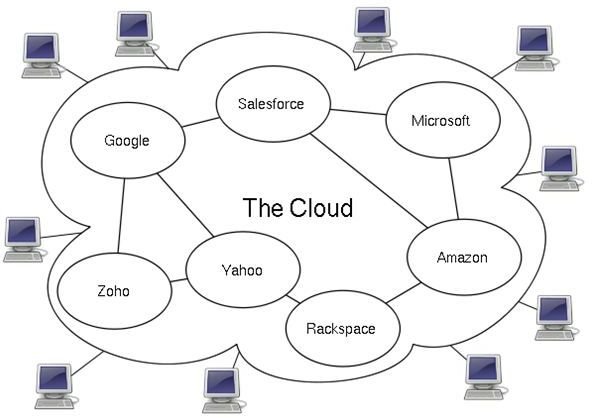The Pros and Cons of Cloud Storage
What is Cloud Storage
So what is cloud storage and how does it work? First we must look at cloud computing.
Conventional internet usage has been based around transmitting information between servers and people’s computer. So information stored on a web serer (such as a website or email) is downloaded to the users PC. Cloud computing works by having virtual servers, which are in fact multiple servers, or indeed people’s PCs. For example, Skype uses cloud computing to run off everyone’s computer who is online at a particular moment. Those people’s PCs are combined as a virtual server.
Cloud storage uses this method of multiple servers being combined into one virtual server to store data. Companies often use it as an effective storage technique for Intranets, Extranets and company data. Now we’ll take a look at the pros and cons of cloud storage.
Advantages
The advantages of using cloud storage are as follows:
- Companies only need to pay for the storage they actually use. So instead of paying for an entire server with 500Gb of storage and only using 300Gb. They can use a pay-as-you-go model and only pay for the 300Gb used up. This is a great way for companies to cut down on their IT costs. Cloud storage also makes storage cheaper, and as such more accessible to small start-up businesses.
- Companies don’t need to install physical storage devices in their buildings. It is cheaper to outsource this to a cloud storage company. Outsourcing hosting operations also immediately equips a company with expertise in the area, in the form of the hosting company.
- Other data-management tasks such as backing up, managing of servers and fixing problems are also offloaded to the service provider. With smaller organizations this saves employing someone to do the job instead. The economies of scale dictate, that a large hosting company can run small to medium size hosting operations, for much less than small to medium size organizations.
- Cloud Storage is also more eco-friendly, as instead of using an entire server, but running at less than 100% capacity - you only use what you need, and as such make use of 100% of the energy consumed. Energy is also saved during peak operating times, because more server space is used economically as needed - instead of simply purchasing complete new servers, which will only be utilized during peak times.
Disadvantages
While cloud computing is certainly revolutionary and a great way to store data, the disadvantages of the new technology must also be taken into account before making a decision, about who to choose as a cloud company to host, and indeed whether or not to use the technology at all. Here are some disadvantages which should help to inform your decision:
- The security of data is not as good as using fixed or local servers. Because there are a lot of transmissions in-between different servers and the user, instead of just the one, security is lessened a little, and it’s harder to cover all opportunities for malicious attacks or data theft. This can be combated in the usual senses however - by protecting servers with security software and securing company Intranets.
- Performance may not be as good as using a fixed or local server. This problem is particularly highlighted when the cloud (network of interlinked servers and users) becomes busy. However, as the technology advances month on month, year on year, this is becoming less of an issue.
- There may be certain laws or policies in your country requiring the use of localized servers if the data is sensitive. This includes financial information and the personal details of citizens or customers. In such a situation, cloud storage doesn’t make the grade.
So there you have it. The pros and cons of cloud storage - hopefully you can now make a good decision as to whether it’s right for you!
If you would like to found out more on this subject, read our detailed review of arguments for and against cloud computing in general.
Image courtesy of Wikipedia - https://en.wikipedia.org/wiki/File:Cloud_computing.svg
